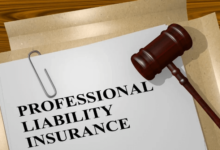AFFF Lawsuit Payouts: Calculating Compensation for Health Issues Linked to Firefighting Foam

In recent years, the number of lawsuits against manufacturers of Aqueous Film-Forming Foam (AFFF) has increased. The allegation is a serious health issue stemming from exposure to firefighting foam.
As the legal battle evolves, understanding the factors determining compensation for individuals affected by AFFF-related health problems becomes paramount.
In this article, we delve into the complexities of AFFF lawsuit payouts and explore how compensation is calculated for those impacted.
Types of Compensation Available
Several types of compensation may be available for individuals who have filed lawsuits related to AFFF exposure. The compensation depends on the various dimensions of harm caused by exposure to PFAS-containing firefighting foam.
According to Consumer Shield, compensation is expected to be allocated in three tiers based on the evidence provided.
- Tier 1 Settlements or Higher Compensation: The estimated payout for this tier will be between $200,000 to $500,000. It will be for those with prolonged exposure to AFFF and who have developed serious health issues, such as cancer.
- Tier 2 Settlements or Moderate Compensation: This is for plaintiffs who have suffered serious health implications, but not as much as Tier-1 people. The estimated amount is between $150,000 and $280,000.
- Tier 3 Settlements or Lower Compensation: The settlement amount of this group will be $75,000 or less. It will be for individuals with mild health concerns or less serious health issues.
Factors Influencing Compensation Amounts
Several key factors can influence the compensation amounts for plaintiffs in AFFF lawsuits. One primary factor is the extent and severity of the plaintiff’s injuries or health issues resulting from AFFF exposure. The nature of the medical treatment required, including the cost of past and future medical care, can significantly impact the compensation amount.
The impact of the injuries on the plaintiff’s daily life, their ability to work, and activities they previously enjoyed are also considered. Another crucial factor is the degree of negligence or misconduct exhibited by the defendants, as punitive damages may be awarded. The jurisdiction where the lawsuit is filed and the specific laws and precedents applicable can also influence the compensation amount.
No settlements have been made to anyone so far, but it is estimated that AFFF lawsuit settlement amounts will be between $40,000 and $300,000.
According to TorHoerman Law, to get the best possible AFFF lawsuit settlement amount, it is essential to provide thorough documentation of exposure. It must include detailed medical records and bills documenting the treatment received. This documentation validates the claim and substantiates the extent of the harm caused by exposure to AFFF.
Process of Calculating Compensation
Calculating compensation in AFFF lawsuits is multifaceted and typically involves several key steps. Numerous factors influence the compensation amount awarded to each victim in an AFFF lawsuit. The duration of chemical exposure and the severity of the resulting injuries are particularly significant in determining the final compensation.
Firstly, compensatory damages may cover medical expenses, including past and future treatment costs, rehabilitation, and medication. Due to health issues, individuals may also seek compensation for lost wages and diminished earning capacity. The pain and suffering endured due to the adverse effects of AFFF exposure may also be compensated.
Case Studies and Examples
According to the Consumer Notice, the following are some examples of AFFF lawsuits and how they are affecting the settlement process.
Lon Holliday, Jr., a firefighter, initiated a lawsuit against 3M and multiple other companies in September 2020. He alleged that his bladder cancer was a direct result of exposure to AFFF. Holliday stated that he frequently utilized AFFF during firefighting training exercises in his civilian and military firefighter roles.
In January 2021, Johnson Controls settled $17.5 million for an AFFF class action lawsuit that included 1,200 Wisconsin residents. The residents were alleged to have been exposed to diseases and property damage due to PFAS contamination of wells in the Peshtigo/ Marinette region.
In October 2022, numerous plaintiffs brought forth lawsuits against several chemical producers, including 3M, Kidde-Fenwal, and DuPont. Lawsuits have been initiated against both the State of New Jersey Port Authority and the fire marshal. These legal actions indicate the potential for litigation and the potential involvement of various entities in AFFF-related matters.
In June 2023, 3M offered a $10 billion reimbursement to end the lawsuit, but it has not been finalized yet.
Legal Representation and Settlement Negotiation
Legal representation is crucial for individuals pursuing AFFF lawsuits, as the legal process can be complex and challenging. Experienced attorneys specializing in environmental and toxic tort law can provide invaluable guidance and advocacy throughout the legal proceedings.
These attorneys work to gather evidence, such as medical records and expert testimony, to strengthen the plaintiff’s case. They also negotiate with the defendants’ legal teams to reach a settlement that fairly compensates the plaintiffs for their injuries and losses.
Settlement negotiations involve assessing the lawsuit’s strength, the outcomes of a trial, and the costs and benefits of continuing litigation versus settling outside. A skilled legal team can help plaintiffs understand their rights and explore their legal options. They can also help the plaintiff to work towards a resolution that provides them with the compensation they deserve.
According to Lezdo Techmed, 7,738 AFFF lawsuits are still pending in the MDL 2873. These cases are still pending, as there have been no settlements so far. The bellwether pool update on AFFF lawsuits in 2024 is a ray of hope for the plaintiffs.
Legal Process for AFFF Lawsuits
The legal process for AFFF lawsuits, particularly those consolidated in multidistrict litigation (MDL), follows a structured path. It is aimed at efficiently managing a large number of similar cases. In MDL proceedings, cases across the country are consolidated in one federal district court to streamline pretrial proceedings such as the AFFF lawsuit.
This centralization allows consistent rulings on common legal issues and promotes judicial efficiency. Once pretrial matters are resolved, individual cases may proceed to trial or resolved through settlement negotiations.
Throughout the legal process, plaintiffs and defendants are represented by experienced attorneys who advocate for their respective interests. Given the complexities involved in AFFF litigation, legal teams play a crucial role in presenting compelling arguments and navigating the intricacies of the lawsuit.
Read also Sweeten Your Picnic: Honey Sticks for National Picnic Day
Frequently Asked Questions
Are there different types of damages that can be awarded in AFFF lawsuit payouts?
Compensatory damages may include medical expenses, past and future treatment costs, rehabilitation, and medication. Individuals may also seek compensation for lost wages and diminished earning capacity resulting from their health issues. Damage due to pain and suffering endured may also be compensated.
How long does it typically take to receive compensation after filing an AFFF lawsuit?
In some cases, settlements may be reached relatively quickly, leading to compensation being awarded within a year or two of filing the lawsuit. However, if the case goes to trial or if there are delays in the legal process, it could take several years to receive compensation. In the case of the AFFF lawsuit, the cases are still pending, and no settlement has been made by anyone.
Can compensation from AFFF lawsuit payouts cover ongoing medical expenses and future treatment needs?
AFFF lawsuit payouts may cover medical expenses, including past and future treatment costs, rehabilitation, and medication. Working with experienced legal professionals is crucial to accurately calculate and seek compensation for these ongoing and future medical expenses.
In conclusion, AFFF lawsuits represent a significant legal battleground as individuals seek justice and compensation for health issues linked to exposure to PFAS-containing foam. The legal process for AFFF lawsuits, particularly those consolidated in multidistrict litigation (MDL), is complex and multifaceted. It involves detailed evidence gathering, legal representation, and settlement negotiations.
Factors such as the duration of exposure and the severity of injuries play a crucial role in determining compensation amounts for plaintiffs. Despite the challenges, legal representation and settlement negotiations are key components in seeking fair compensation for those affected by AFFF. As the legal landscape evolves, it is essential to continue advocating for accountability and justice for those impacted by AFFF.





